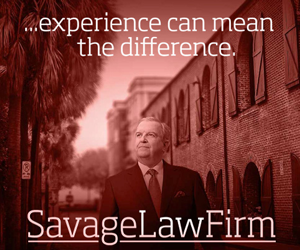By Paul Gable
Horry County Council will hold a workshop Thursday on the new Solid Waste Management Plan (SWMP) being proposed by the Horry County Solid Waste Authority (SWA).
The new plan includes a proposed further expansion of the landfill on Hwy 90 in addition to an already approved expansion that, according to previous projections, was supposed to be accepting waste in 2017 but has not been constructed or needed yet.
Since its creation by Horry County Ordinance 60-90, the SWA has been tasked, “There is a need in Horry County to develop an acceptable alternative method of solid waste disposal and to reduce tonnage of solid waste disposal in sanitary landfills due to the County’s high water table and other geologic characteristics that make utilization and expansion of the existing landfills and development of new landfills especially expensive and difficult.”
Throughout its nearly 30 year existence, the SWA has failed to live up to this task. The latest proposed SWMP clearly demonstrates this failure by planning an expansion on top of an already approved expansion of landfill facilities.
The SWA staff and board members have been pushing for approval of the new SWMP since October 2018 so the authority can go forward to the S. C. Department of Health and Environmental Control with an application for a permit for the newly proposed expansion.
But, rushing approval through council so application can be made to DHEC for approval of a second landfill expansion when one expansion is already approved but not begun seems questionable.
The burying of solid waste is expensive. It becomes even more expensive when proposed expansions are built on top of former landfills which are already closed, which is the basic plan in the approved and proposed expansions.
In addition to construction and daily operations, much of the expense associated with a landfill is the cost requirements of both the state and federal governments to properly close exhausted landfills (closure costs) and to monitor what is happening in the buried waste for 30 years beyond closure (post closure costs).
Private landfills must post cash, bonds or other surety with DHEC to demonstrate they will have enough money at the end of operations to properly cover closure and post closure costs.
Publicly owned landfills get a break from that requirement, sort of. They are allowed to pledge the county’s general fund revenue as a guarantee.
In other words, at the end of the life of the landfill, if the SWA does not have enough money set aside for closure and post closure costs, the county’s general fund revenue will make up the difference. Of course, this would mean cutting other county employees and services normally paid out of the general fund.
According to the SWA’s own projections reported to its board, between the years of 2024 – 2043, the SWA will have to set aside $60 million for closure and post closure of costs associated with its permitted but not yet constructed landfill.
That is over $3 million per year, a sum the SWA has never accumulated in one year for closure and post closure costs. After 28 years of operations, the SWA currently has less than $18 million in its closure and post closure accounts and that sum will be reduced to $3 million by 2024, according to SWA projections, as the money is “borrowed” to fund new construction.
One of the problems here is the closure and post closure costs are going to be required more than a decade in the future and politicians have a tendency to think in terms of the immediate – think of the federal social security trust fund.
We have the problems of continuing to pile garbage on top of garbage in what the county acknowledges is an environmentally sensitive area as the SWA is adjacent to Sterritt Swamp along with the ever increasing costs of doing so.
With R.J. Corman recently receiving a significant TIGER grant to upgrade the county’s rail system, isn’t it time to explore possible advantages of hauling some of the county’s waste to landfills in other areas of the state?
Nine counties operate public landfills in South Carolina. Horry County buries approximately 99% of the municipal solid waste generated in the county at its Hwy 90 landfill. The other eight counties that operate landfills average approximately 35% of the waste generated in their respective counties buried in their own landfills. What do they know that Horry doesn’t?
We currently have at least seven members of county council opposing spending a total of $5,200 for council and staff to hold a budget retreat at Pinopolis. It would be nice for these self-proclaimed “watchdogs of the people’s money” to take a very serious look at what is very serious projected expenditure of public funds vs. alternatives and a potential very serious financial burden to the county long term.
The last thing the county needs is for the SWA to become Horry County’s equivalent of Santee Cooper to the state.
Oh yes, to those “watchdogs”, what do you think of SWA board members going to a convention in Las Vegas in May when you don’t want to even want to spend the money to go to Pinopolis in April?







Speak Up…